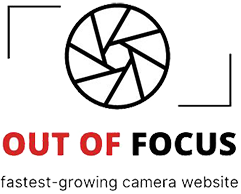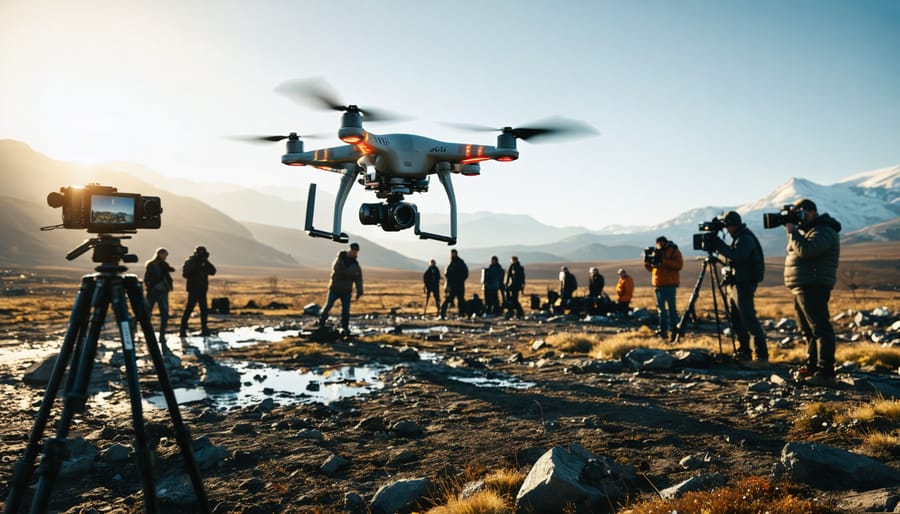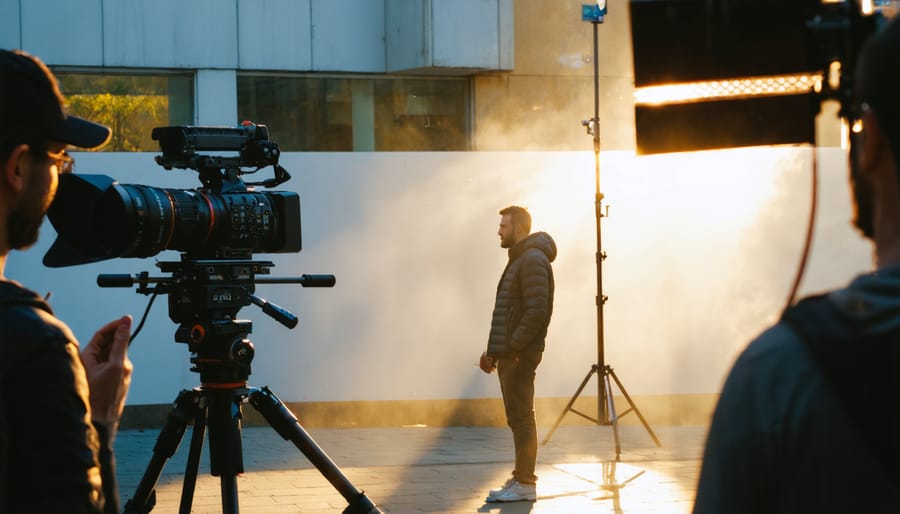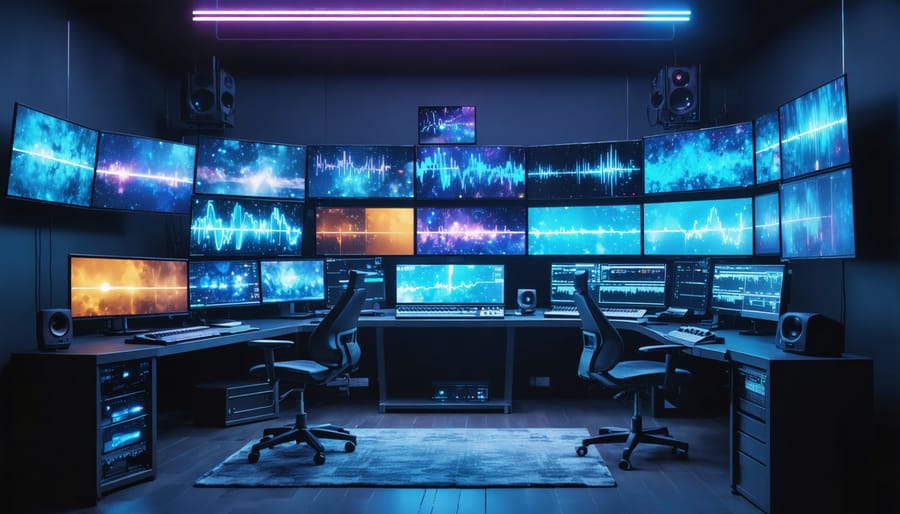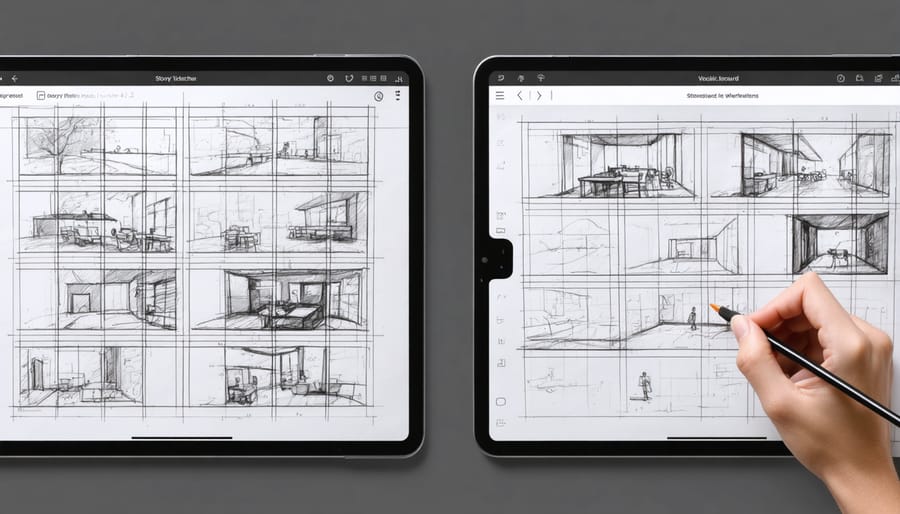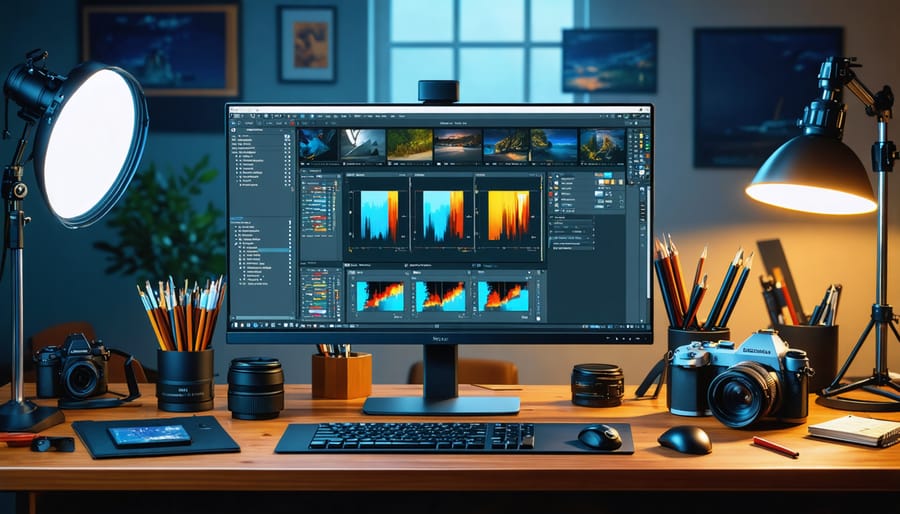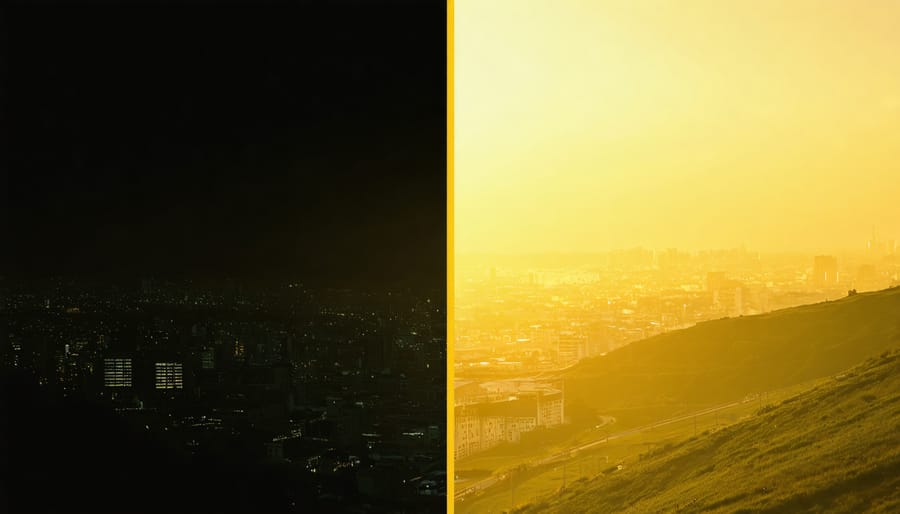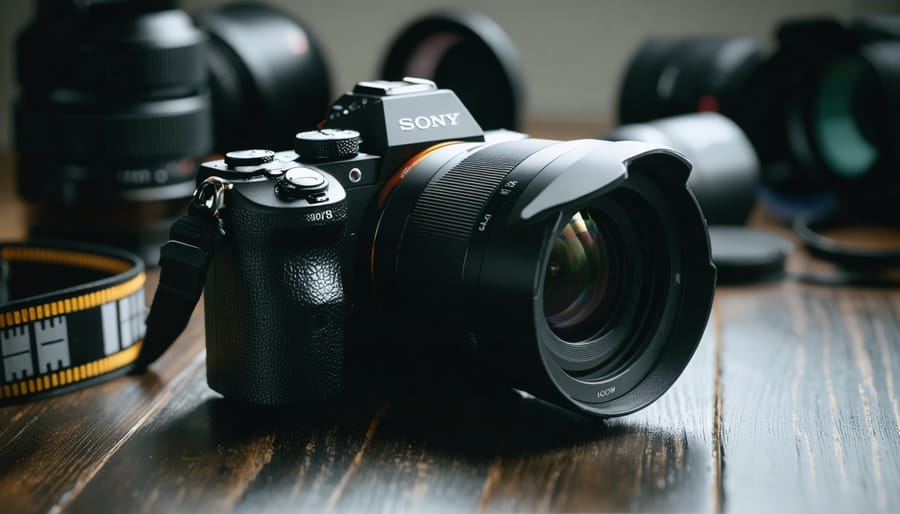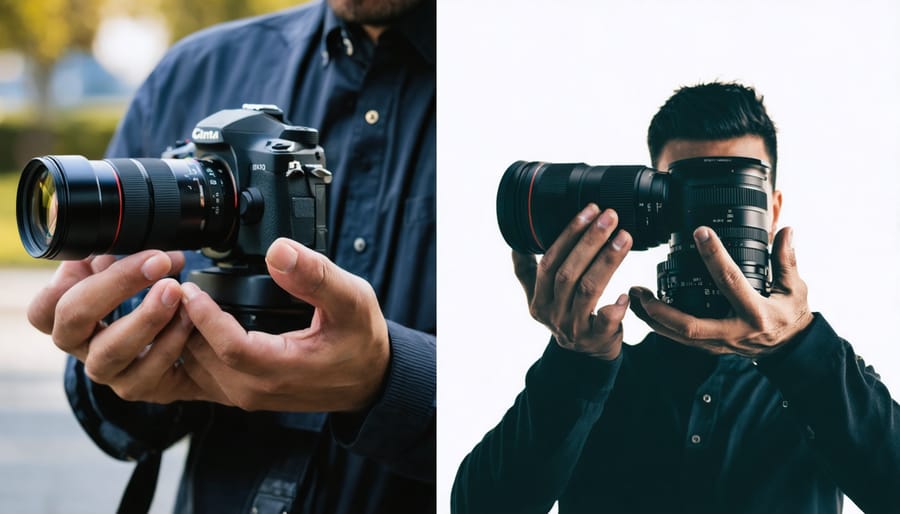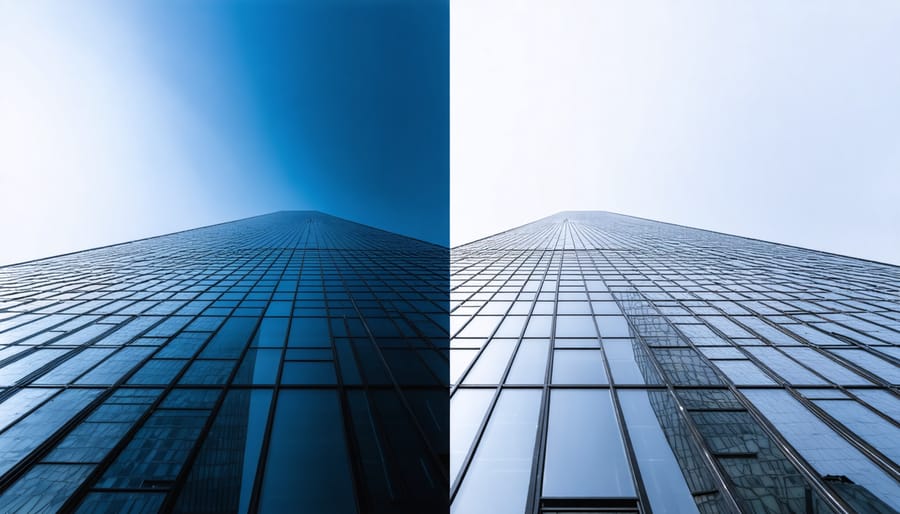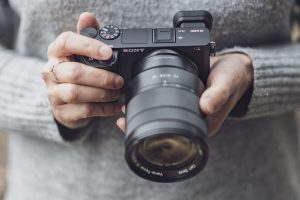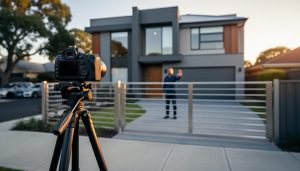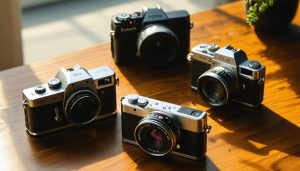Master the fundamentals of camera tracking before attempting any complex compositing work—your ability to match virtual elements to real-world camera movement determines whether effects look seamless or amateurish. Shoot clean plates (footage without actors or moving elements) at every location, maintaining identical camera settings and positions; this single habit solves 80% of post-production headaches when removing unwanted objects or adding digital elements.
Film visual effects have evolved from exclusive Hollywood territory into accessible tools for creative storytellers at every level. What once required million-dollar …
Cinematic Magic: How Drones Are Revolutionizing Film Photography
Drones have revolutionized modern cinematography, transforming what was once impossible into everyday reality. From sweeping landscape shots that rival Hollywood productions to intimate wedding videos that capture moments from breathtaking angles, aerial cinematography has become an essential tool in every serious filmmaker’s arsenal.
The integration of drone technology into filmmaking isn’t just about capturing stunning aerial footage – it’s about expanding the creative possibilities of visual storytelling. Modern drones combine sophisticated flight controls, stabilization systems, and high-resolution cameras to…
Natural Light Mastery: Pro Techniques for Cinematic Video
Natural light transforms ordinary film footage into cinematic masterpieces when you master three essential techniques. Position subjects near large windows during golden hour to capture soft, directional lighting that adds depth and dimension to every frame. Scout locations with natural bounce surfaces – white walls, reflective buildings, or pale concrete – to harness professional lighting techniques without additional gear. Shape available light by strategically placing subjects relative to light …
Pro-Level Video Post-Production Secrets That Transform Your Footage
Transform raw footage into cinematic masterpieces through the art of video post-production – where technical precision meets creative vision. In today’s digital age, the difference between amateur content and professional-grade videos often lies not in the camera used, but in the meticulous post-production process that follows.
From color grading that evokes specific emotional responses to seamless audio mixing that immerses viewers in your story, post-production is where the magic of filmmaking truly comes alive. Industry veterans know that up to 70% of a video’s impact is crafted during this crucial phase, where …
Pro Storyboarding Secrets That Make Your Videos Look Cinematic
Transform your video vision into a compelling visual story by mastering the art of storyboarding – the essential pre-production tool used by filmmakers from Hollywood blockbusters to viral YouTube content. A well-crafted storyboard serves as your video’s blueprint, mapping out every shot, transition, and camera movement before you hit record.
Start by sketching rough thumbnails of key scenes on a simple grid template, focusing on composition and camera angles rather than artistic perfection. Include basic directorial notes, timing estimates, and movement arrows to communicate your creative intent to your team or remind …
Master Cinematic Colors: Scinetone Grading in DaVinci Resolve
Master the distinctive Scinetone look in DaVinci Resolve by leveraging its powerful cinematic color grading techniques and precision tools. This sought-after aesthetic, characterized by its balanced skin tones and film-like contrast, transforms ordinary footage into compelling visual narratives. Professional colorists prize Scinetone for its ability to deliver consistent, repeatable results while maintaining natural-looking highlights and shadows. Whether you’re color grading commercial projects or …
Why Yellow Color Grading Creates That Perfect Cinematic Glow
Yellow color grading transforms ordinary footage into compelling visual narratives, wielding warmth and psychological impact that spans from subtle vintage aesthetics to bold, modern statements. Master cinematic color grading techniques by understanding how yellow’s tonal variations evoke specific emotional responses – from the golden hour’s nostalgic embrace to the high-contrast urgency of contemporary thrillers. While most colorists focus solely on saturation levels, the true art lies in …
These Cinematic Lenses Transform Your Sony A7III Into a Film Camera
Transform your Sony A7III into a cinematic powerhouse with the right lens choice – a decision that impacts everything from focal length and aperture to the distinctive character of your footage. While the A7III excels in both photography and video, achieving that coveted film-like aesthetic requires specific lens characteristics that go beyond basic specifications.
Professional cinematographers consistently rely on three key lens qualities: manual focus control for precise rack focusing, declicked aperture rings for smooth exposure transitions, and specific optical formulas that deliver gorgeous bokeh and natural lens flare. …
Why Pro Filmmakers Choose Cine Lenses (And When Photo Lenses Work Better)
Picture yourself holding two seemingly identical lenses – yet one costs three times more and sports a completely different set of features. The choice between photo and cine lenses isn’t just about price tags; it’s about achieving that coveted cinematic look versus capturing the perfect still moment. While photography lenses excel at delivering razor-sharp autofocus and versatile aperture control, cine lenses bring precision focus gearing, consistent exposure throughout zoom ranges, and …
Why Rectilinear Lenses Create That Hollywood Look (And When to Use Them)
In the realm of professional photography and cinematography, rectilinear lens effect stands as a cornerstone of architectural and landscape imagery, delivering straight lines that remain perfectly straight – even at the widest angles. Unlike their fisheye counterparts, rectilinear lenses correct barrel distortion to maintain natural perspective, making them indispensable for photographers who demand geometric precision in their work.
Picture a towering skyscraper photographed with a standard wide-angle lens, its edges bowing outward like a barrel. Now imagine that same building captured through a rectilinear lens – its …
